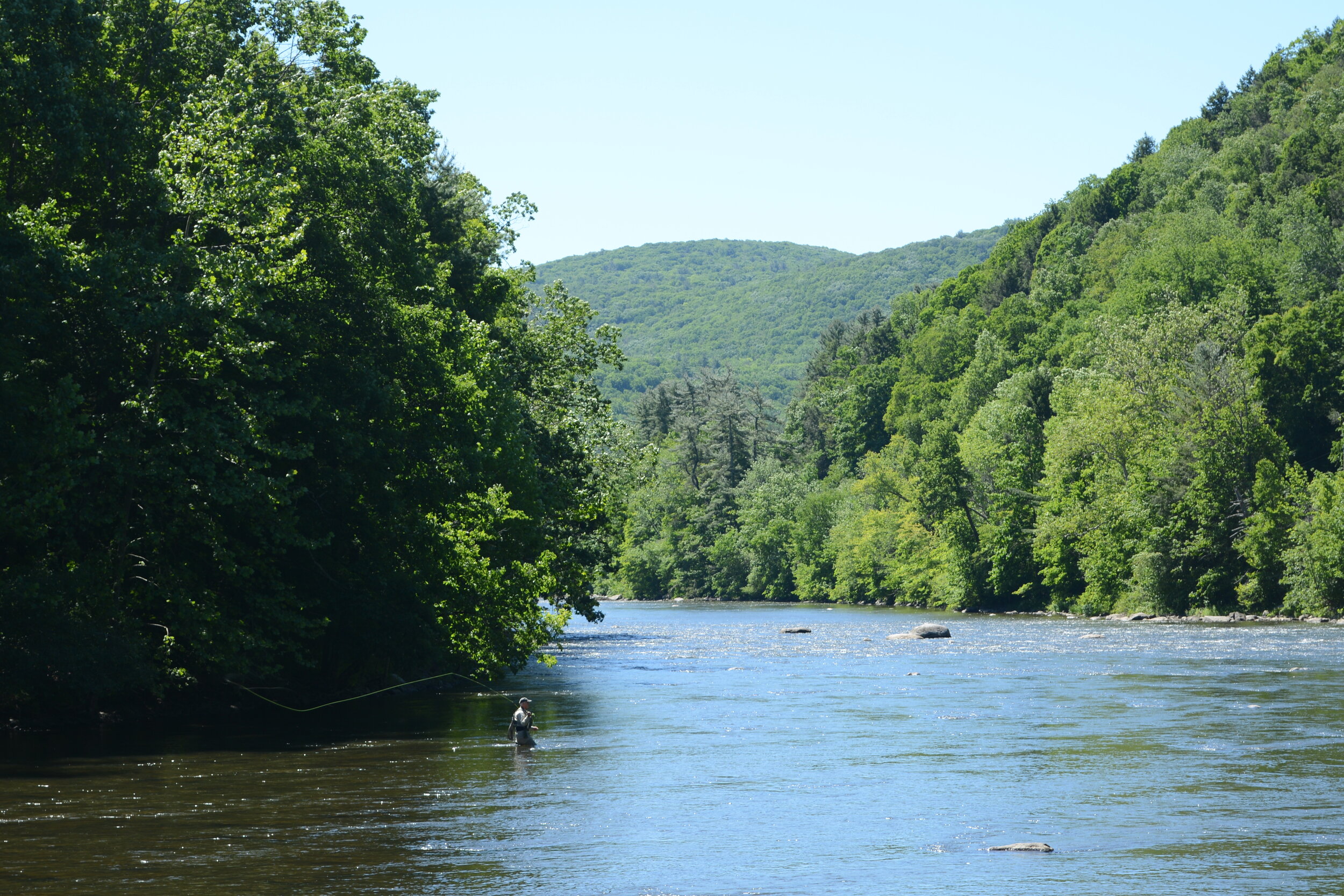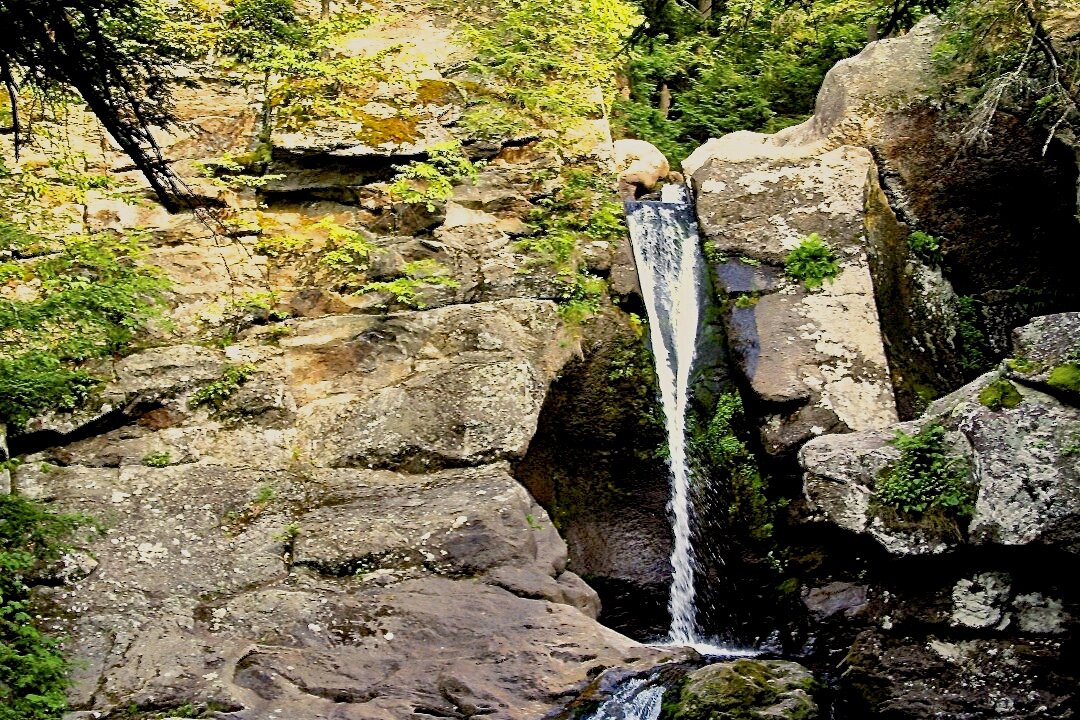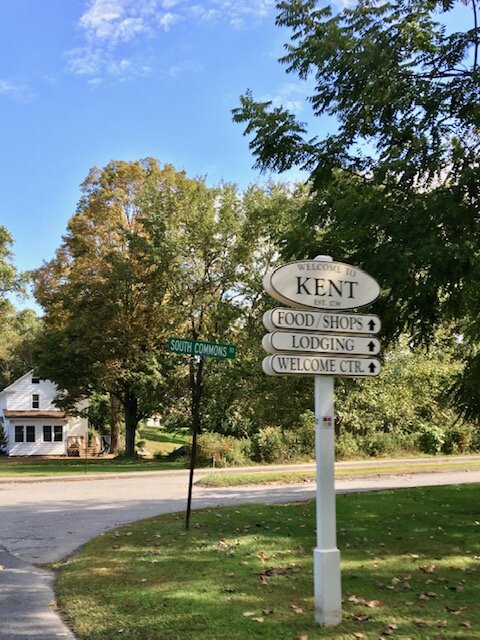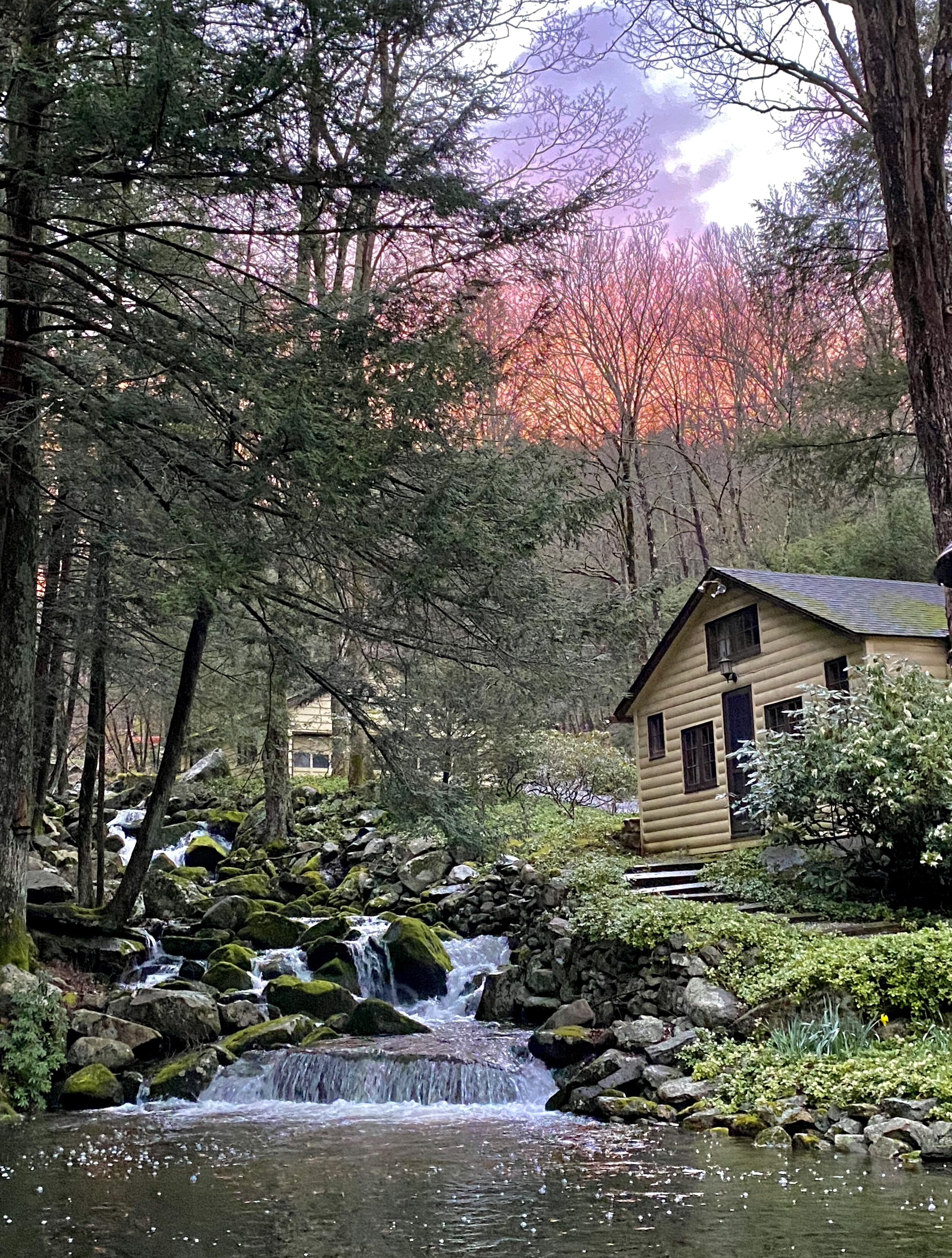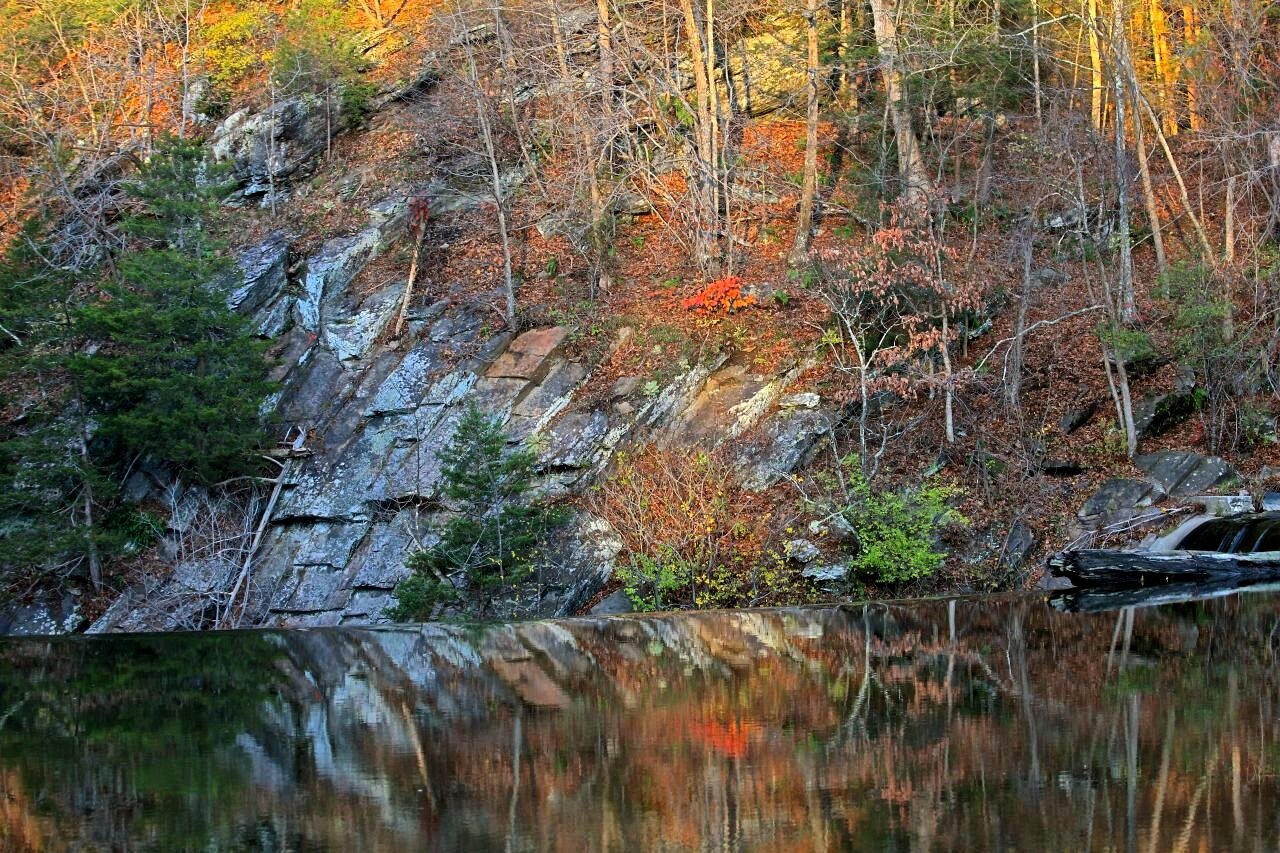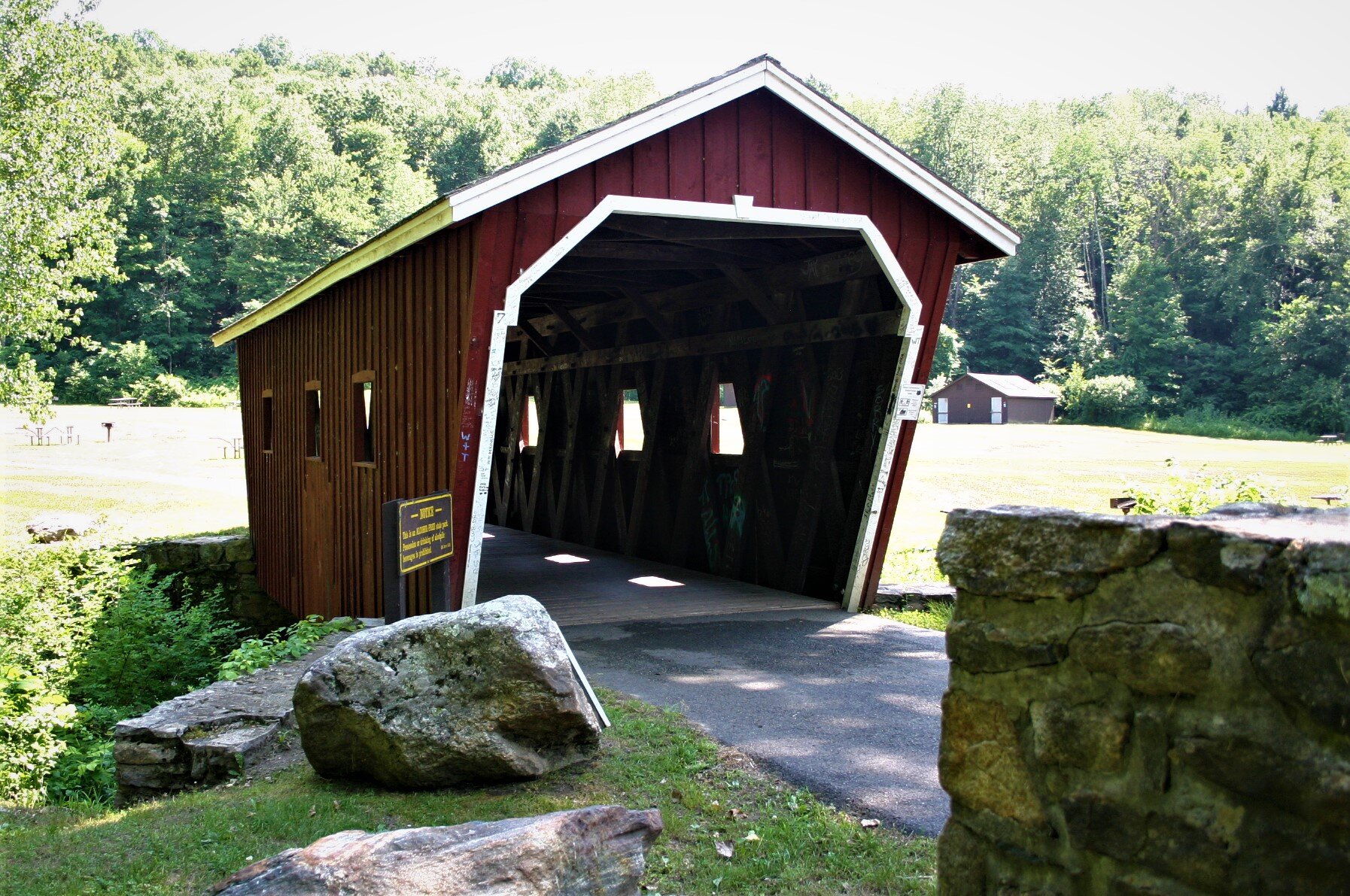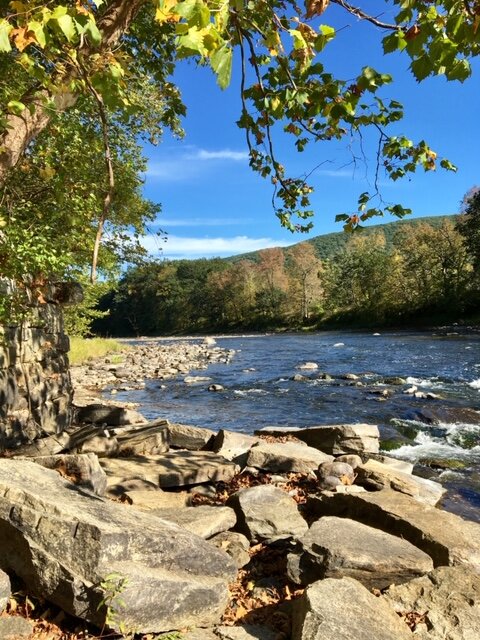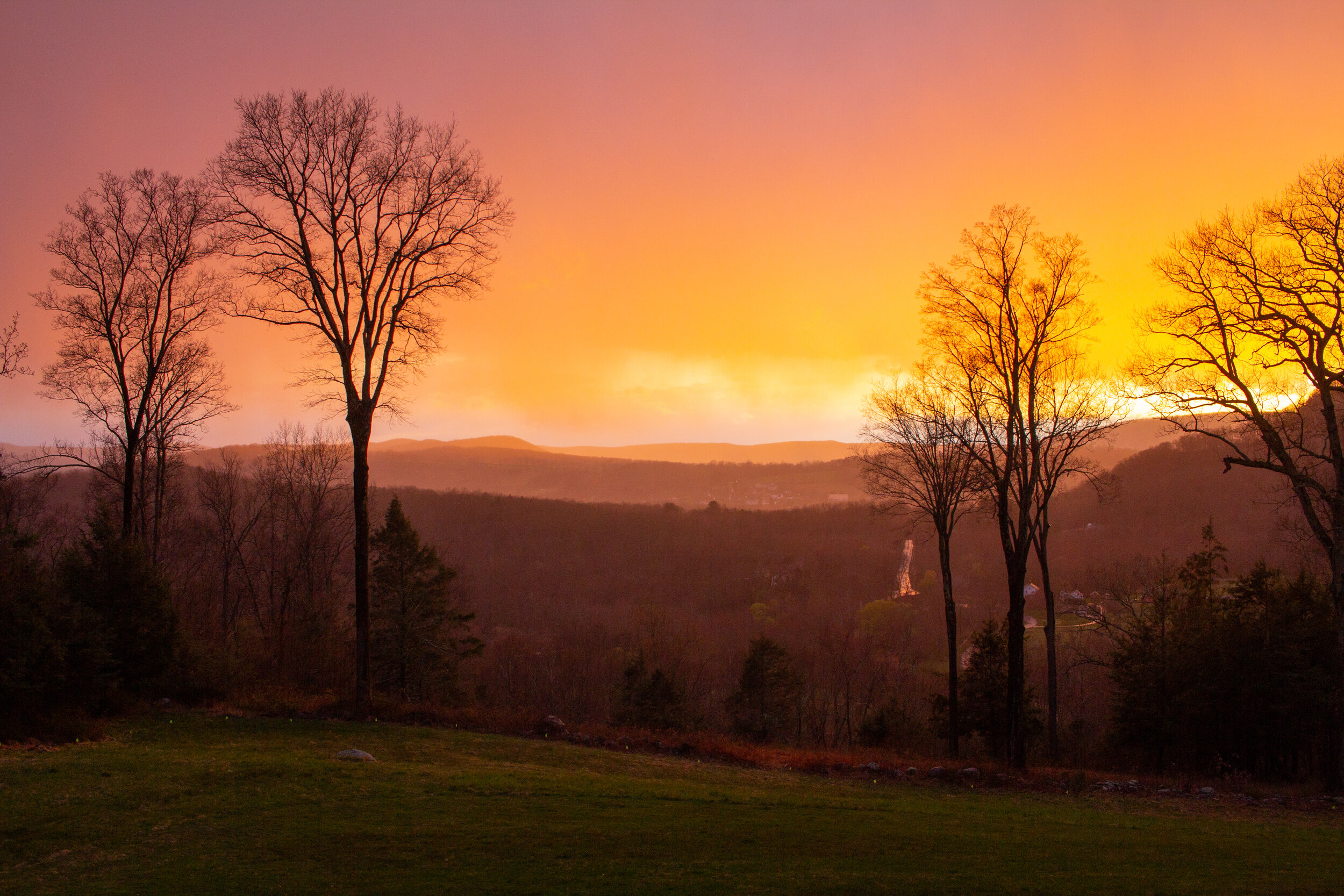Hiking in and around Kent
Kent is an ideal place for our outdoor enthusiasts. Explore the great outdoors by hiking, mountain biking, fishing, cross-country skiing and enjoying aquatic recreation. Preserving open space to protect the rural character of the town is important to Kent, as evidenced by the many trusts and preserves.
Voted New England’s Best Fall Foliage Town by Yankee Magazine, Kent is also the perfect destination for those inclined to take a scenic drive, too.
For avid hikers, the Appalachian Trail runs through the town, with a trailhead about a mile from the village center, and is great for day hikes or longer treks. Kent is located 1,461 miles from Springer, GA and 723 miles from Katahdin, ME. Thru hikers can be seen in town throughout the season as Kent is an important stop on their journey.
Bull’s Bridge Recreational Area offers spectacular views of the rapids as water plummets from the hydroelectric dam on the Housatonic River and several trails. The confluence of the Housatonic and Ten Mile Rivers is an impressive sight. A picturesque overview of the surrounding area can be found atop Ten Mile Hill.
Pond Mountain Natural Area is one of Kent's best kept secrets. Boasting 800 acres of land with forests, open fields and a crystal-clear glacial lake, Pond Mountain Natural Area is certainly a gem for those seeking the serenity of nature with several easy to moderate hiking trails, including one that circumnavigates the lake, and viewpoints atop mountain peaks.
For those seeking a challenging trek, St. John’s Ledge is the place to go. Accessed via River Road, this is a popular place for both advanced hikers and rock climbers. The steep hike or climb to the top offers rewarding views of the Housatonic River and area below.
Kent Land Trust, established in 1989 with a mission to preserve natural resources in Kent, offers many hiking trails at their preserves. The town of Kent’s website also has hiking maps available to download.
During winter, many of Kent’s trails can also be climbed with the aid of snowshoes or crampons.
Hiking Safety Tips
As you trek through the great outdoors in Kent, observe the following safety tips to be sure your experience is safe and enjoyable.
Tell a family member or friend when and where you’ll be hiking. Give them a quick call or text before you set out and when you return.
Always have a printed copy of the map of the trail you’ll be exploring with you.
If there is a registration booklet at the beginning of your trail, be sure to write down your name(s), date and time of your hike and notate your checkout once you’ve finished.
Be sure your phone is fully charged before setting out.
Wear appropriate footwear such as comfortable sneakers or hiking boots. If you’re trekking in the snow, wear snowshoes or crampons.
Dress for the weather—wear layers (synthetic fibers and not cotton are better for cold-weather hiking), bring a sunhat, sunblock, rain coat, winter coat, gloves and whatever else you’ll need to be comfortable in the weather conditions you’ll be hiking in.
Stay hydrated by bringing plenty of water. Keep your energy level up by bringing snacks.
Bring a small first aid kit with you.
Stay on clearly marked paths. If you’re unsure of where to go next, stop, turn around and go back.
State Parks
Kent boasts three state parks within its borders, all of which offer stunning natural beauty and opportunities for outdoor activities.
Kent Falls State Park
Photo by Beckerman Photography
Kent Falls State Park features an impressive series of 17 waterfalls cascading down from 250 feet and flowing into Falls Brook, eventually joining the Housatonic River. First Nations people fished along the banks of this brook and mills made use of water power during colonial times. The park itself was created in 1919 with a gift of 200 acres by the White Memorial Foundation. This scenic spot has viewing platforms and a hiking trail that loops the magnificent falls for visitors to enjoy.
Macedonia Brook State Park
Macedonia Brook State Park was also created by a gift of land from the White Memorial Foundation in 1918. This area too was once inhabited by First Nations people and during the colonial era was home to industries like cider, grist and saw mills and the manufacture of iron ore. Ruins of an iron forge are still visible at the southern end of the park. In the 1930s, the Civilian Conservation Corps, a government program that was part of then President Franklin D. Roosevelt’s New Deal, maintained a camp at the park and worked to make improvements. Today, Macedonia Brook State Park is open seasonally for camping in addition to being a great spot for hiking, fishing and cross country skiing in the winter.
Lake Waramaug State Park
Created in 1920 and named after the First Nations Schaghticoke Chief Waramaug, Lake Waramaug State Park boasts the second largest natural lake in Connecticut. Located along the west shore, the park is a favorite place for seasonal activities like camping, picnicking, swimming along the well-maintained beach, canoeing and paddle boarding. Canoe rentals are available during the summer months in addition to a launch area for those who bring their own kayaks and canoes.

